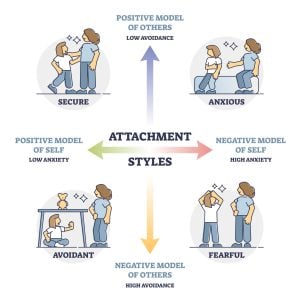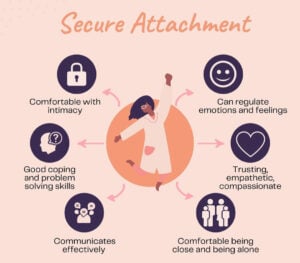Adult Attachment
Attachment theory shapes how we connect intimately. Explore the science behind how early bonds with caregivers influence adult relationships. Learn your attachment style and its origins. Discover research-backed techniques to build secure, fulfilling bonds. Foster awareness of attachment wounds from the past. Develop skills for communicating needs, managing conflict, and nurturing healthy relationships.
Key Terms
- Attachment Styles
Attachment Styles
An attachment style describes the way in which people relate to others, based on how secure they feel. Secure attachment is characterised by feelings of trust and safety in relationships. There appears to be continuity between early attachment styles and the quality of later adult romantic relationships.
Learn More: The Different Types of Attachment Styles
Frequent Asked Questions
Covert narcissists are those who have all the same goals as overt narcissists such as craving attention and power over others, but their methods of doing this are more subtle that it may be less obvious to others. Covert narcissists typically are more introverted in personality and may come across as shy and withdrawn but are still able to manipulate others.
Learn More: Covert Narcissism Signs and How to Respond
Romantic relationships are likely to reflect early attachment style because the experience a person has with their caregiver in childhood would lead to the expectation of the same experiences in later relationships, such as parents, friends, and romantic partners.
However, researchers have proposed that rather than a single attachment which is generalized across relationships, each type of relationship comprises a different attachment style. This means that a person could be securely attached with their parents, but insecurely attached with romantic relationships.
Learn More: Secure Attachment: From Childhood To Adult Relationships











